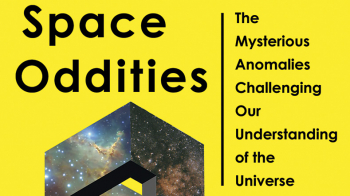
Popular representations of the Standard Model (SM) often hide its beautiful weirdness, for example slotting quarks and leptons into boxes and arranging them like a low-grade Mendeleev, or contriving a dartboard arrangement. The “double simplex” scheme invented in 2005 by US theorist Chris Quigg, which was recently given a flashy makeover by Quanta magazine (see image), is much richer (arXiv:hep-ph/0509037).
Jogesh Pati and Abdus Salam’s suggestion, in their 1974 shot at a grand unified theory, that lepton number be regarded as a fourth colour, inspired Quigg to place the leptons at the fourth point of an SU(4) tetrahedron. The additional edges therefore represent possible leptoquark transitions. Left-handed fermion doublets (left) are reflected in the broken mirror of parity to reveal right-handed fermion singlets (right), though Quanta, unlike Quigg perhaps favouring a purely left-handed Majorana mass term, omit possible right-handed neutrinos.
A final distinction is that Quigg chooses to superimpose the left and right simplexes – a term for a generalised triangle or tetrahedron in an arbitrary number of dimensions – while Quanta elects to separate the tetrahedra, and label couplings to the Higgs boson with sweeping loops. This obscures a beautiful feature of Quigg’s design, whereby the Yukawa couplings hypothesised by the SM, which couple the left- and right-handed incarnations of massive fermions in interactions with the Higgs field, link opposite corners of the superimposed double simplex, placing the Higgs boson at the centre of the picture. Quigg, who intended that the double simplex precipitate questions, also points out that the corners of the superimposed tetrahedra define a cube, whose edges suggest a possible new category of feeble interactions yet to be discovered.








